How to create a killer marketing plan
You’ve probably heard the saying — if you don’t know where you’re going, you’ll never get there. This also applies to your marketing.
- Blog

In today's fast-paced business landscape, the way we sell has undergone a significant transformation (especially since COVID).
Buyers have become more empowered, armed with information at their fingertips and a limited amount of time to engage with vendors.
As a result, sales processes must adapt to meet the challenges of engaging modern buyers effectively. This is where hybrid selling comes into play—a strategy that combines the best of in-person and virtual sales techniques.
In this comprehensive guide, we'll touch on hybrid selling, defining your sales process and mapping this in your CRM to provide you with valuable insights that drives remarkable results.
A sales process refers to a series of repeatable steps a sales team takes to move a prospect from an early-stage lead to a closed customer. A strong sales process helps reps consistently close deals by giving them a framework to follow.
An effective sales process should always mirror the customer journey for your product or service. The customer journey is the active research process a potential buyer goes through leading up to a purchase. Your job as a salesperson is to help the buyer through this journey.
You can think of a sales process as a map that guides your sales team on their journey to turn potential leads into customers. Without the map, your marketing team's lead generation efforts would quickly go to waste.
Having a standardised sales process could also help less experienced reps quickly get up to speed with best practices and learn what to do at different sales stages.
In summary — you make more money when you build a proper sales process.
When you provide your sales team with a common framework, they have a more efficient roadmap to closing deals.
A B2B sales process usually follows these seven steps:
Prospect
Lead qualification
Company research
Pitch
Objection handling
Close
Nurturing
Below is a great visualisation of this 'funnel' by HubSpot.
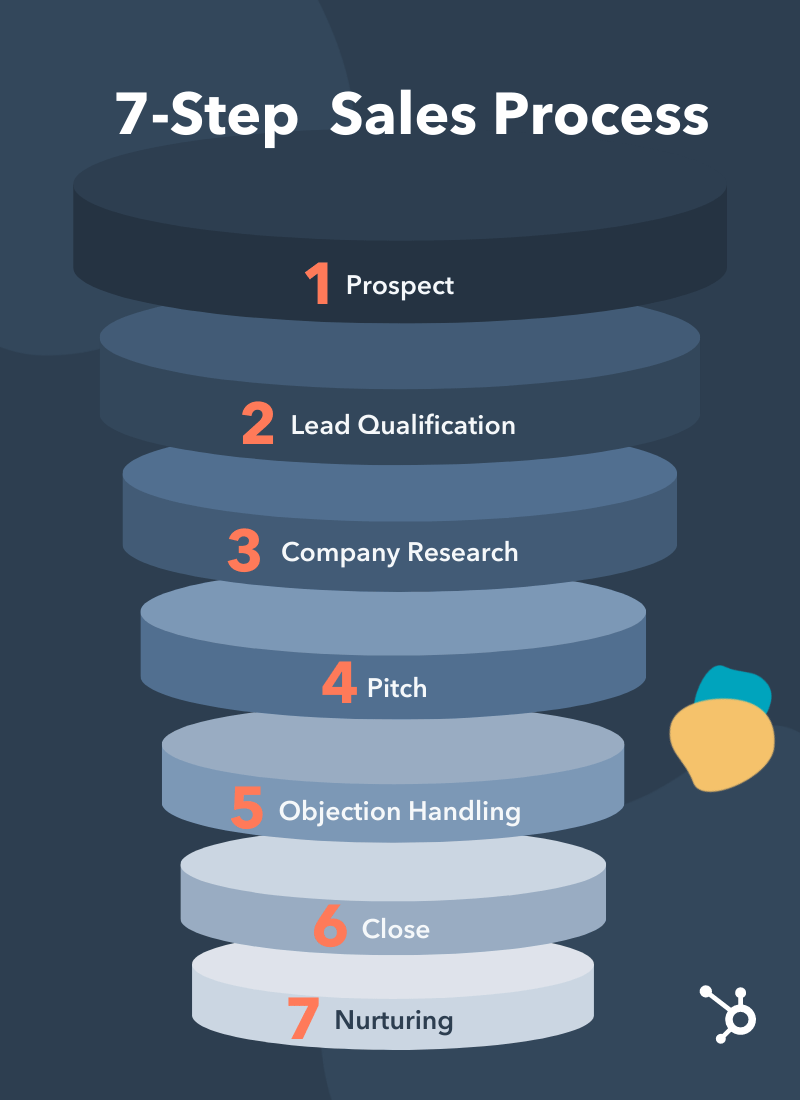
Traditionally, sales were conducted through distinct remote and face-to-face interactions. However, hybrid selling has emerged as a powerful approach that blends the benefits of both worlds.
By combining virtual and in-person techniques, hybrid selling offers numerous advantages for sales teams.
These include faster response times, shorter sales cycles, enhanced coaching opportunities, cost-effectiveness, and alignment with buyer preferences. By understanding and embracing hybrid selling, businesses can gain a competitive edge in today's dynamic sales landscape.
To excel in hybrid selling, it's crucial to develop a comprehensive sales strategy that aligns with the unique aspects of this approach.
The first step is assessing the fit for hybrid selling within your industry. While certain industries traditionally rely on face-to-face interactions, hybrid selling can be applied to nearly all sales teams, regardless of industry.
The key is to foster a sales culture that values adaptability, customer-centricity, and the ability to leverage technology effectively. By embracing these principles, you can set your team up for success in the hybrid sales landscape.
Sales prospecting refers to the proactive (outbound) process of identifying and engaging prospects who have the potential to become customers of your product or service.
It is a critical step in the sales cycle, aimed at finding and qualifying leads that have a higher likelihood of converting into paying customers.
It differs to inbound marketing because the sales rep is proactively doing the outreach vs contacting leads who have already expressed interest in your product or service.
Sales prospecting involves various activities, such as researching and identifying target markets or industries, sourcing and gathering relevant contact information, reaching out to potential prospects through cold calls, emails, social media, or networking events, and initiating conversations to assess their needs, challenges, and interest in your solution.
The goal of sales prospecting is to build a pipeline of qualified leads that sales representatives can further engage with and nurture to move them closer to a purchase decision.
Sales prospecting is often seen as a numbers game, as it involves reaching out to a large number of potential prospects to identify those who are genuinely interested and ready to explore a business relationship.
Ultimately, sales prospecting is a fundamental aspect of successful sales efforts, serving as the initial step in building relationships, uncovering opportunities, and generating revenue for a business.
Prospecting complements your inbound marketing efforts nicely.
The next step of a sales process is connecting and qualifying new leads — whether you've generated them from prospecting or marketing has generated them from inbound marketing.
The goal at this stage is to decide whether or not they're a good-fit lead for your business and whether or not they'll likely move forward.
A sales rep usually 'connects' on a "connect call" or a "discovery call." They have a goal of connecting and qualifying but they are different at the same time.
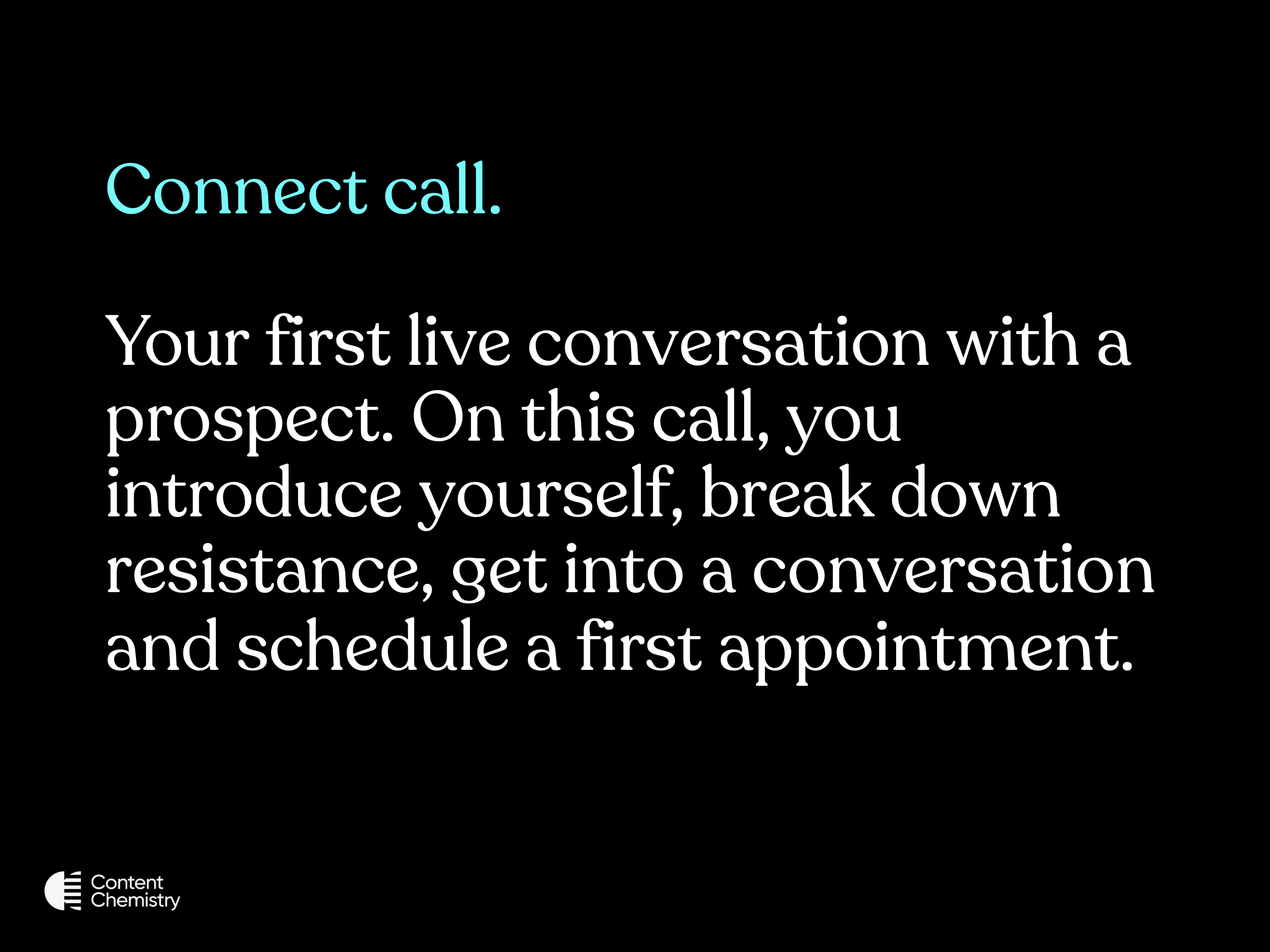
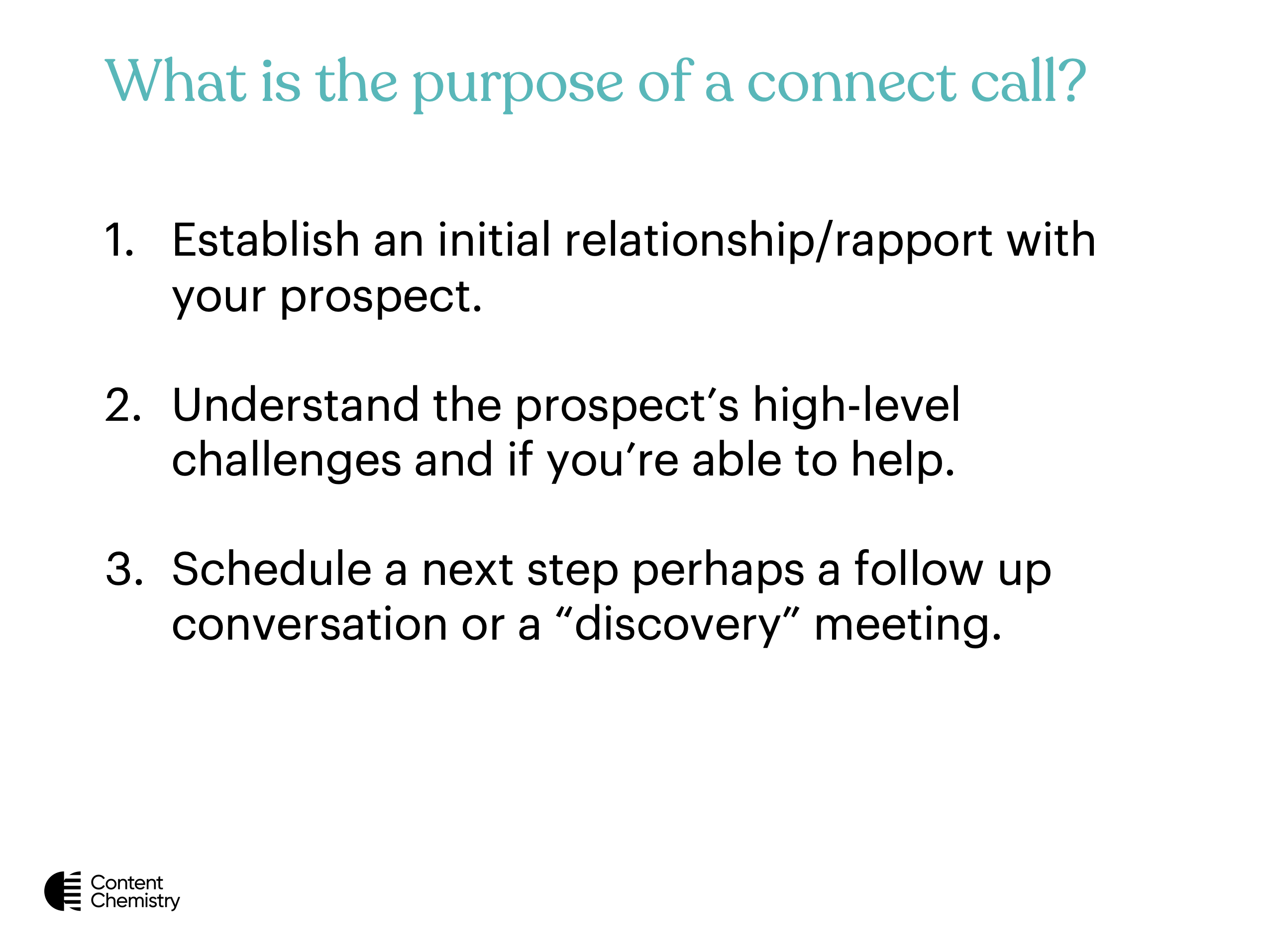
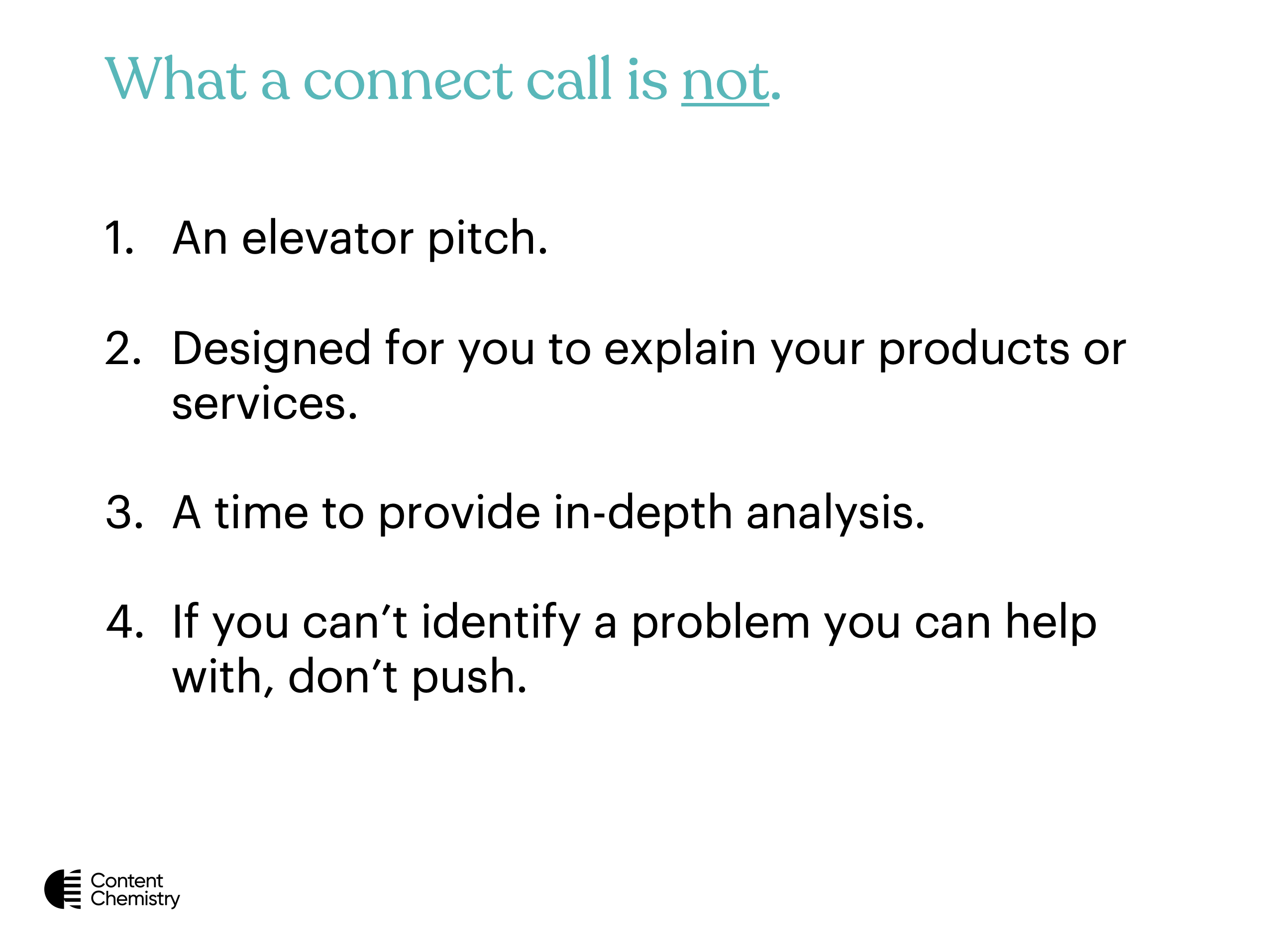
Now that you've setup a meeting (discovery call) with your prospect or lead, what next?
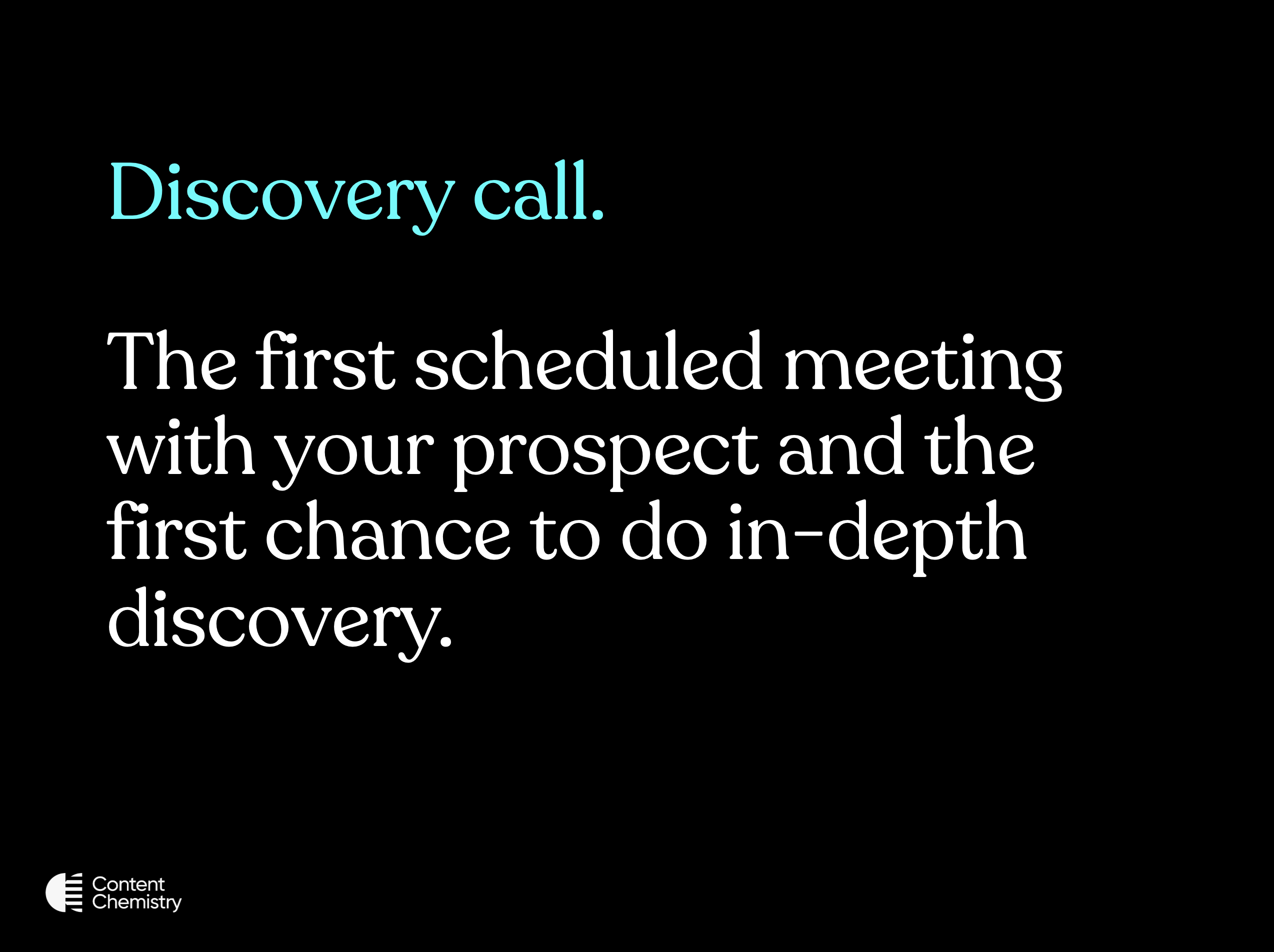
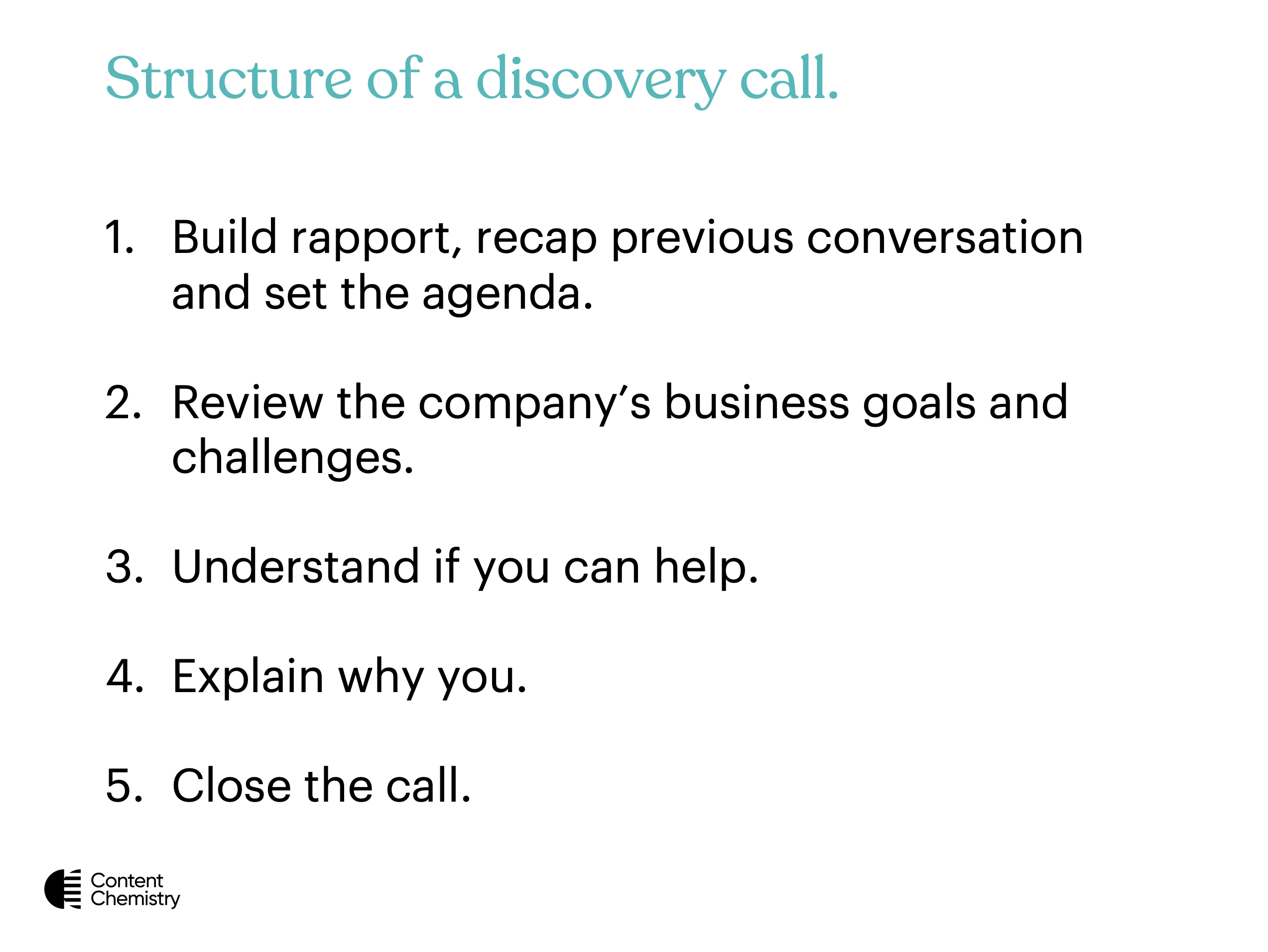
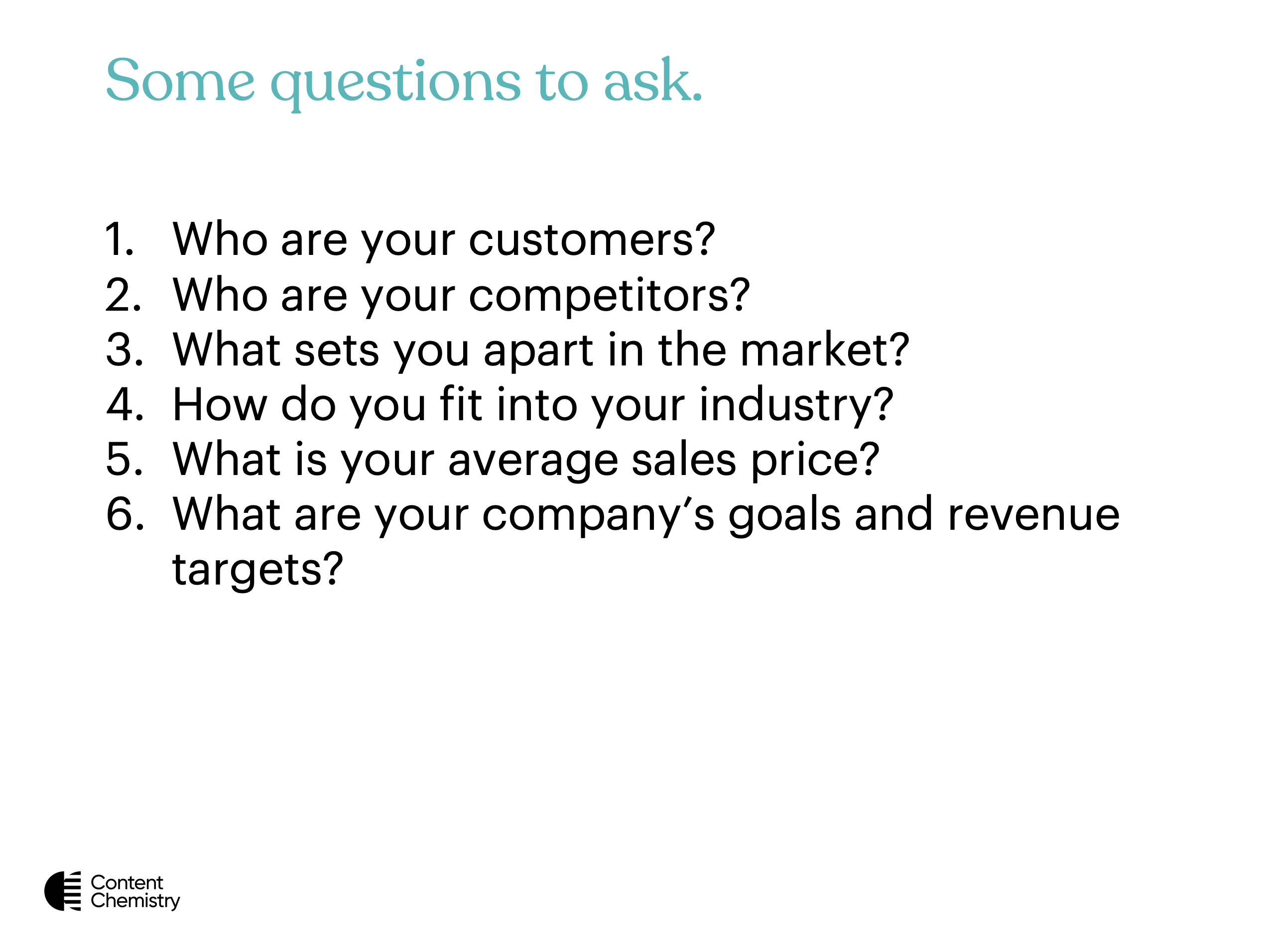
The discovery/exploration process is where the real magic happens in sales. Establishing trust and credibility is crucial in the hybrid sales landscape.
Sales professionals must position themselves as trusted advisors, challenging traditional sales dynamics and creating equal business stature. Engaging with relevance and credibility through personalized stories, relevant questions, and valuable insights can capture the interest of buyers and establish a strong foundation of trust.
Setting clear expectations and desired outcomes using the up-front contract technique allows for a mutual understanding of meeting purpose, agendas, roles, and expected outcomes. By mastering the art of discovery calls, you can uncover critical information, address buyer needs, and navigate the sales process effectively.
How do you qualify a prospect or lead you might ask? There's several different lead qualification frameworks out there. One of the most common is BANT.
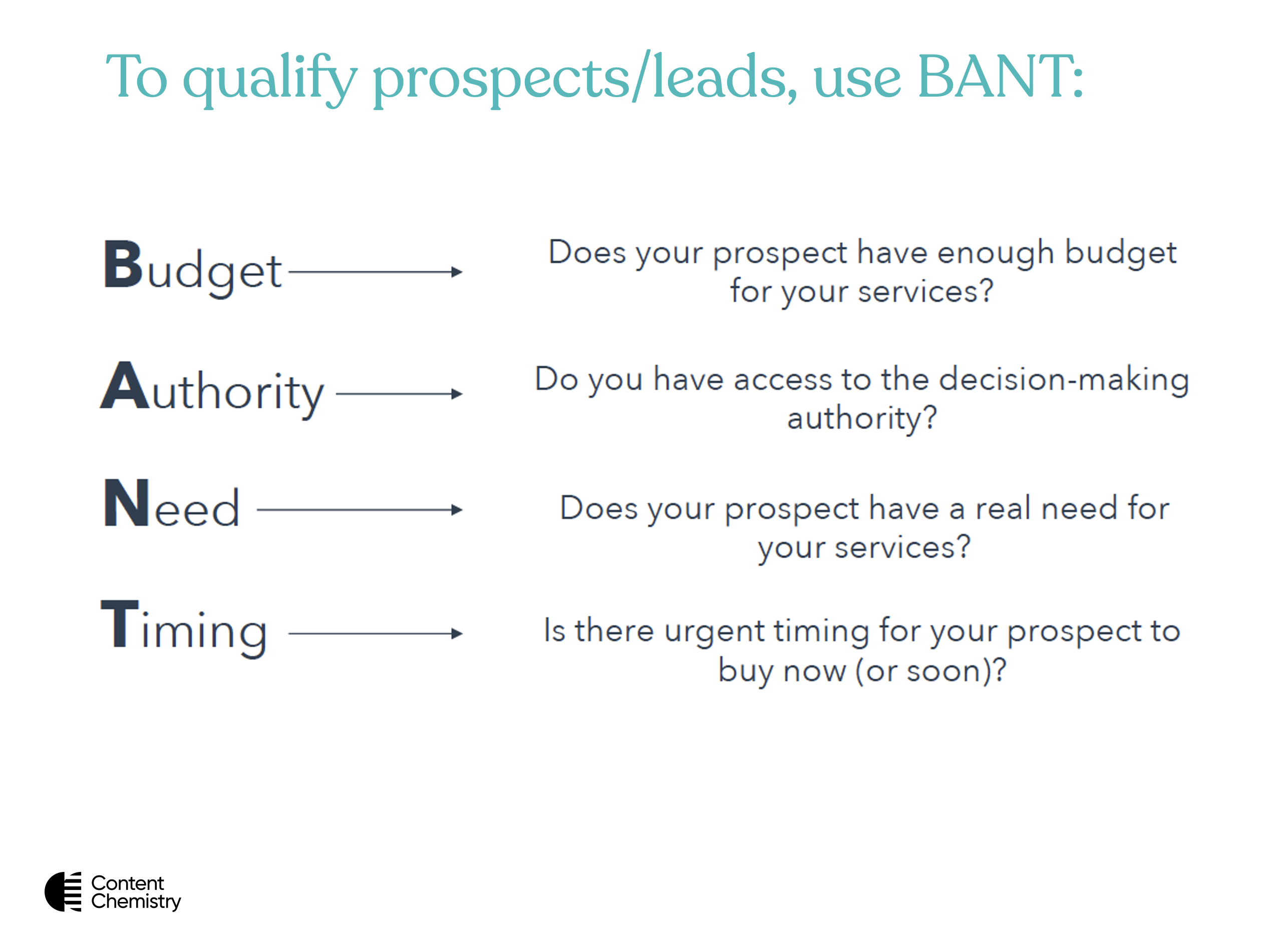
Or if you REALLY love acronyms, you can use BANT 2.0 otherwise known as CGP-TCI-BA.
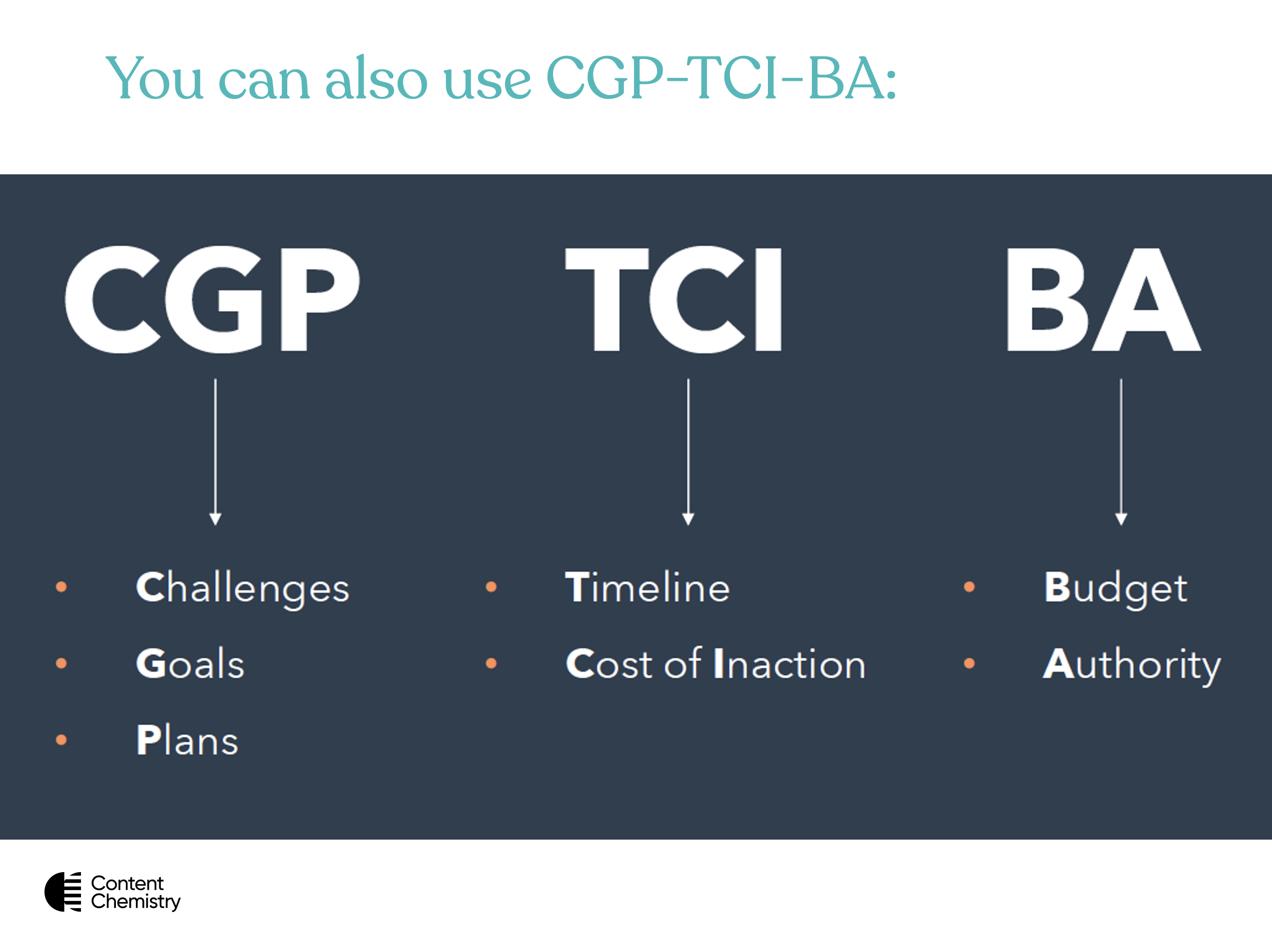
Let's break this down!
CGP stands for challenges, goals and plans. You need a deep understanding of your prospect’s challenges, goals and plans before you can even begin to
suggest a path forward.
TCI stands for timeline, cost of inaction (nothing). Help your prospect define a timeline for implementing their plans. Get them to articulate the negative
consequences of inaction and the positive implications of taking action.
BA stands for budget and authority. Instead of leading with that, save it for the end. Help your prospect understand the vision and what’s at stake before you start talking dollars.
Below is a great cheat sheet for the above methodology.
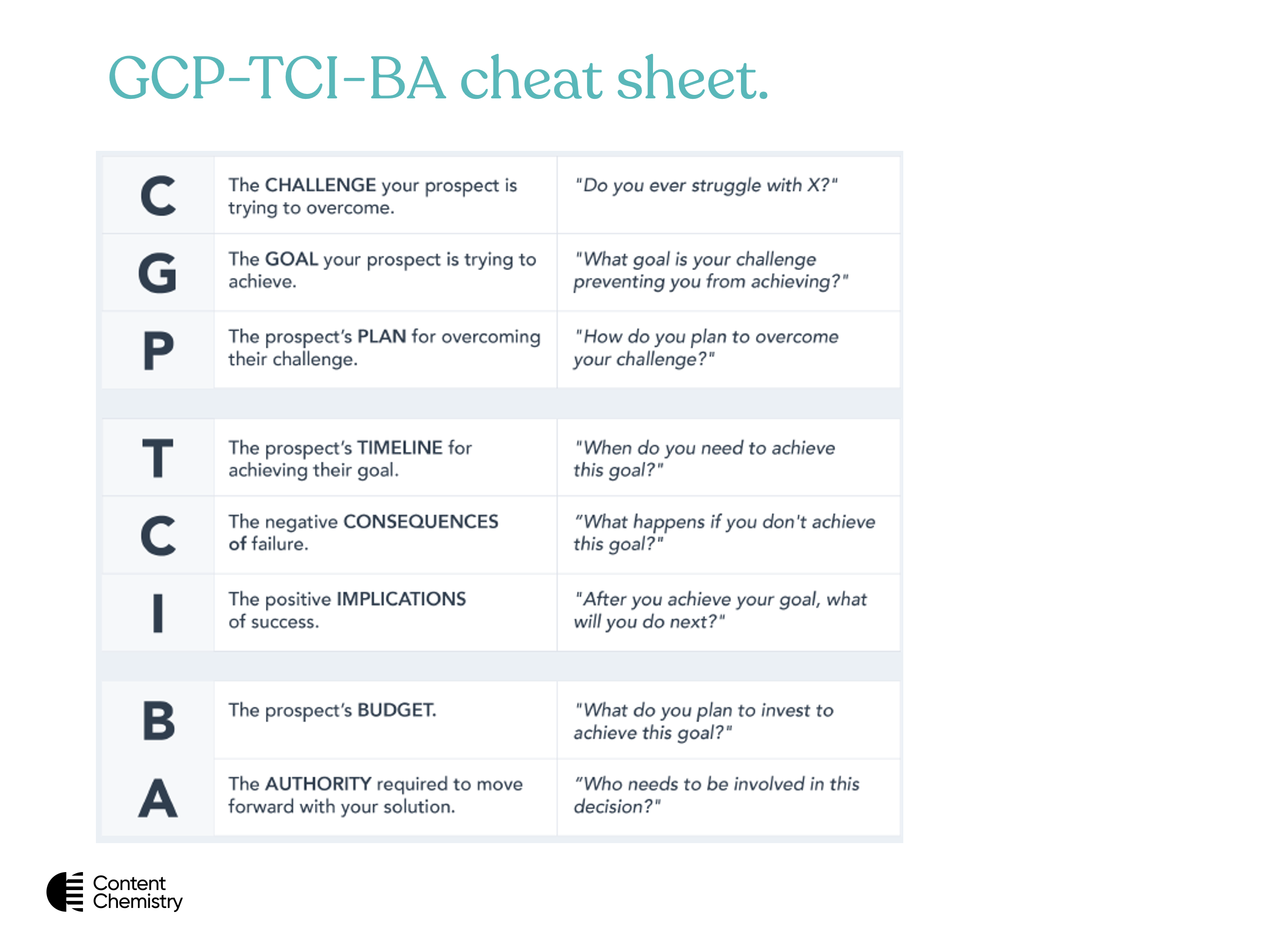
Pro tip: After a discovery call with a prospect/lead, grade them from 1-10. 1 being 'This prospect is never going to buy' to 10 'This prospect will buy today.'
Pro tip: We recommend ONLY creating a deal in your CRM when you've had a discovery call (or similar meeting) with a prospect/lead in which case they become a Sales Qualified Lead (SQL). Here's a great blog that goes into more detail. For every other prospect/lead that is 'pre-meeting' we recommend using lists, views and lead status to keep on top of these.
Once you've connected with and qualified your prospects/leads, the next step is loosely called "company research" but it basically revolves around you as the sales rep doing more research to increase the likelihood of closing a deal.
You might need to speak with other people at the company in different departments to get a holistic view of the business and its objectives. A good salesperson is expected to understand the company better than the individual prospect who works there.
This may involve multiple meetings to really uncover the root cause of challenges they're experiencing.
Once you've connected, qualified and researched the prospect's business, the next step is to pitch your product or service. This often involves a personalised demo of your product or service.
This step is time-consuming, so it typically comes later in the sales process and is reserved for more qualified prospects — which is why the connecting and qualifying step is so critical. You don't want a sales rep wasting any of their valuable time if it's avoidable.
This step can also be called the 'advise' or explore step.
The crucial part of this stage is understanding each prospect's challenges and needs and establishing your product or service as the solution.
A key part of this step is that you outline your proposed solution, usually by way of a presentation deck.
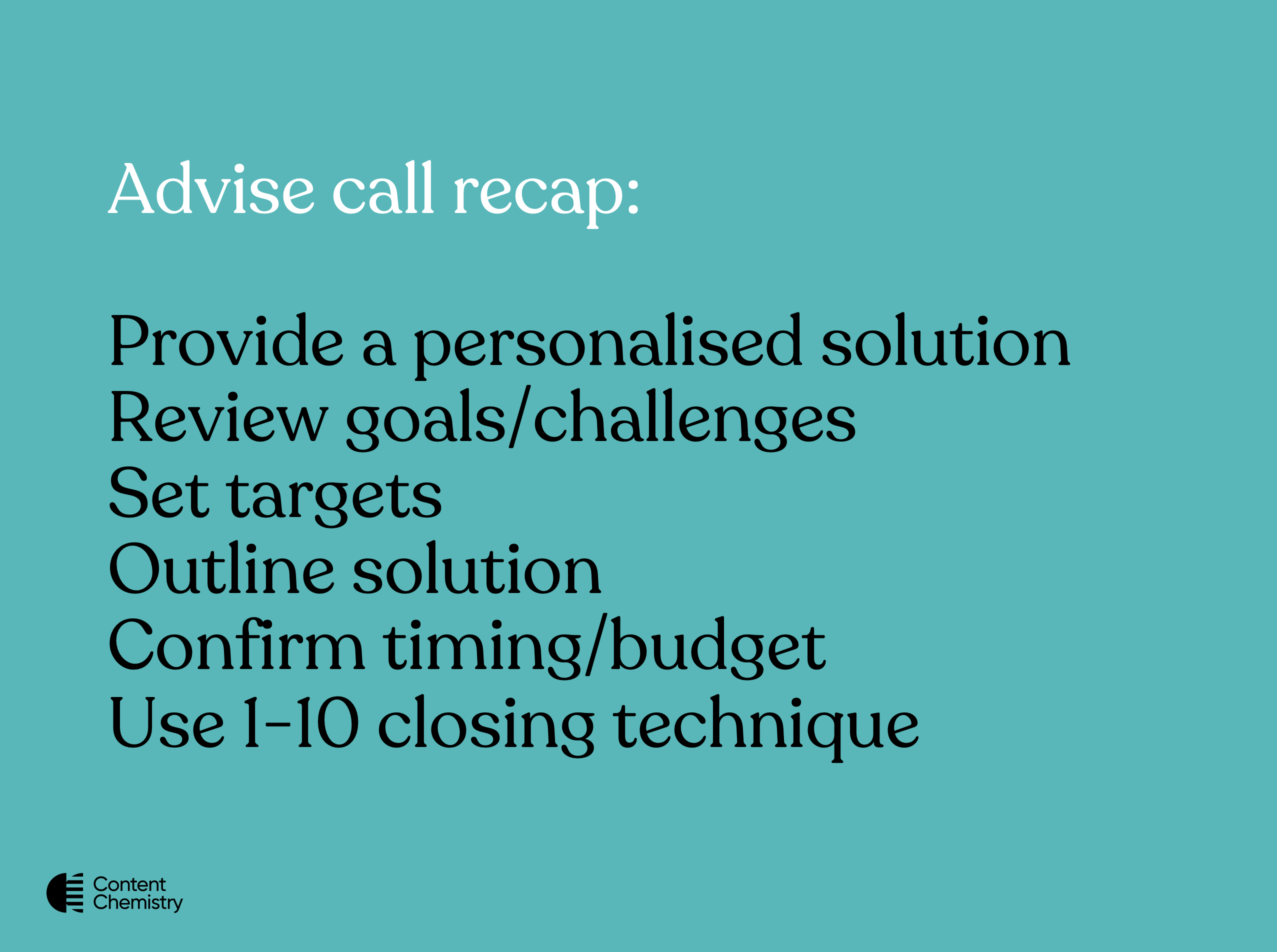
The 1-10 closing technique (refer below) is a great thing to do at the end of your 'advise call' with the prospect/lead.
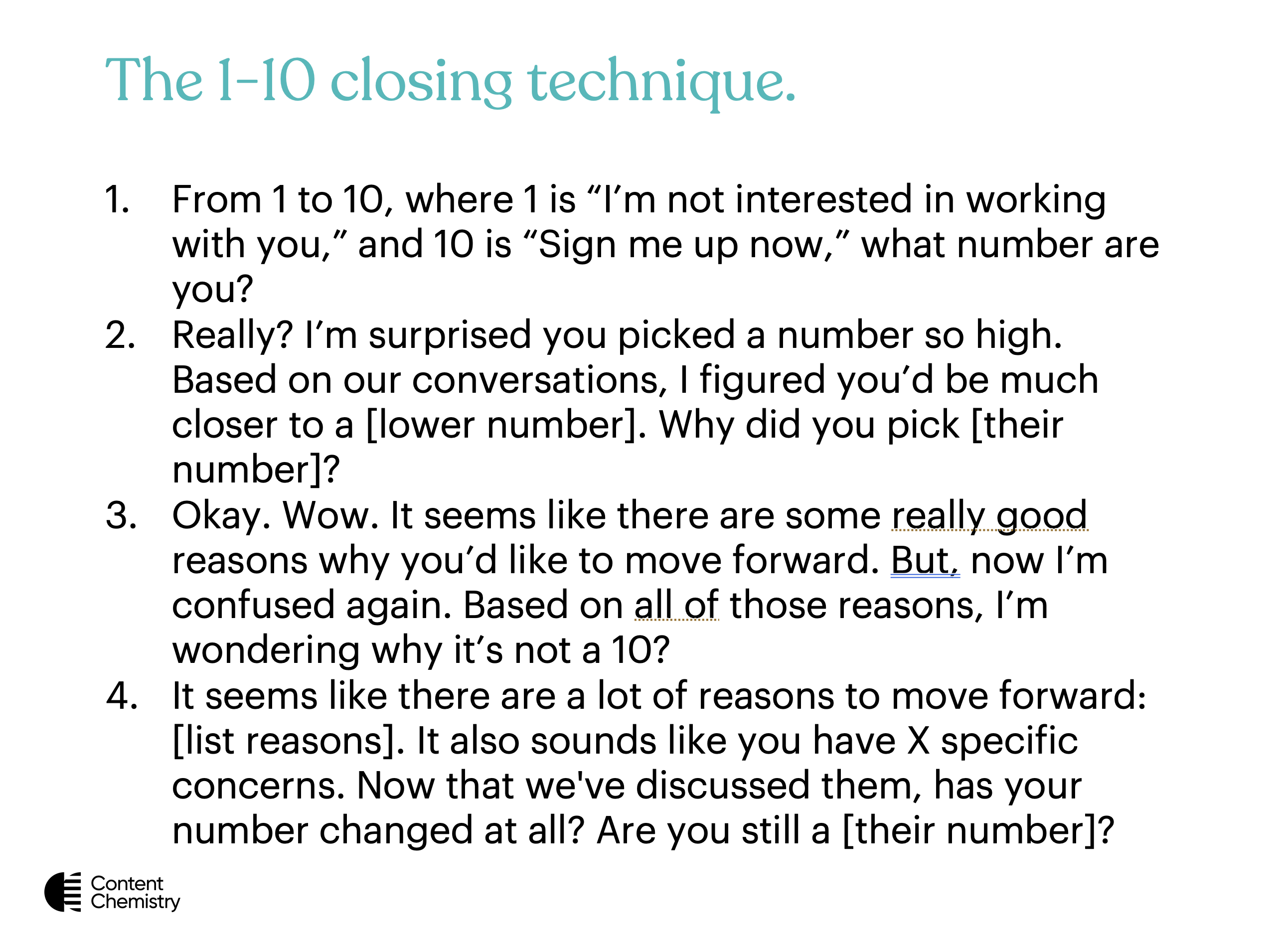
Pro tip: If the prospect gives you a number lower than 6, do not proceed.
Pro tip: Tailor each pitch to meet the prospect's unique use case and pain points. Additionally, a sales rep might bring an engineer or executive to the meeting with them to demonstrate the level of service the customer will receive when doing business with your company. This also allows them to answer more technical questions the rep might not be best suited to answer.
It's not uncommon for prospects to have objections to your presentation and proposal.
In fact, it's expected — which is why this is a specific step in the sales process.
Your sales team should be prepared to handle any and all objections. Listening to your prospect's objections and questions can help your sales reps better tailor your product to fit their needs. Through their research and presentation preparation, reps should identify and anticipate possible objections, whether about cost, onboarding, or other parts of the proposed contract.
This step of the sales process refers to any late-stage activities that happen as a deal approaches closing. It varies widely from company to company and may include delivering a quote or solution proposal, negotiation, or achieving the buy-in of decision-makers.
This step may also require you providing social proof in the form of case studies, testimonials, etc to support the decision.
Pro tip: Try to include as much social proof in the form case studies, testimonials, reviews, awards, etc as you can in your solution proposal.
The final step of the sales process also involves continuing to communicate and reinforce value to customers.
This can provide opportunities to upsell and cross-sell, as well as opportunities to get secure referrals from delighted customers.
Pro tip: Early on in the sales process, mention the service and customer success reps who will be helping your client onboard after the deal closes. That way they're familiar, at least by name, with the team who will be taking over, and the transition will feel less abrupt.
Defining exit criteria in your sales process is also super important.
Exit criteria are the things that have to happen in order for a sale to
move from one stage of your sales process to the next.
For each step in your sales process, ask yourself:
What does the rep need to do to help the prospect move forward?
What indicates that the rep has completed their role in that phase of
the buying process?
Is there certain information they need to collect from the prospect?
Are there certain commitments they need to secure?
Once you've worked through the above, the next (really important) step is making sure that it is reflected in your CRM and that your marketing and sales team are crystal-clear on it.
Pro tip: Your CRM should be your company’s source of truth for where your prospect is in your sales process.
What are some really important factors to consider when mapping out deal stages in your CRM?
Required. A required step is one that you want your reps to take in
every sale, no matter what. Pro tip: Take out anything that can reasonably be
skipped without hurting the customer's likelihood of closing.
Factual. A factual step is tied to a specific action rather than being based on a feeling. When it comes to determining whether a step has been completed, you want a clear-cut yes or no.
Inspectable. An inspectable step is one that can be verified by a record inside the CRM.
Buyer-centric. Ultimately, it's the buyer's actions that will close the sale. The sales rep is just there to help. So as much as possible, base your deal stages on actions the buyer takes.
Pro tip: When the stages of your sales process are defined that rigorously, the forecasts you build on those stages will actually be accurate.
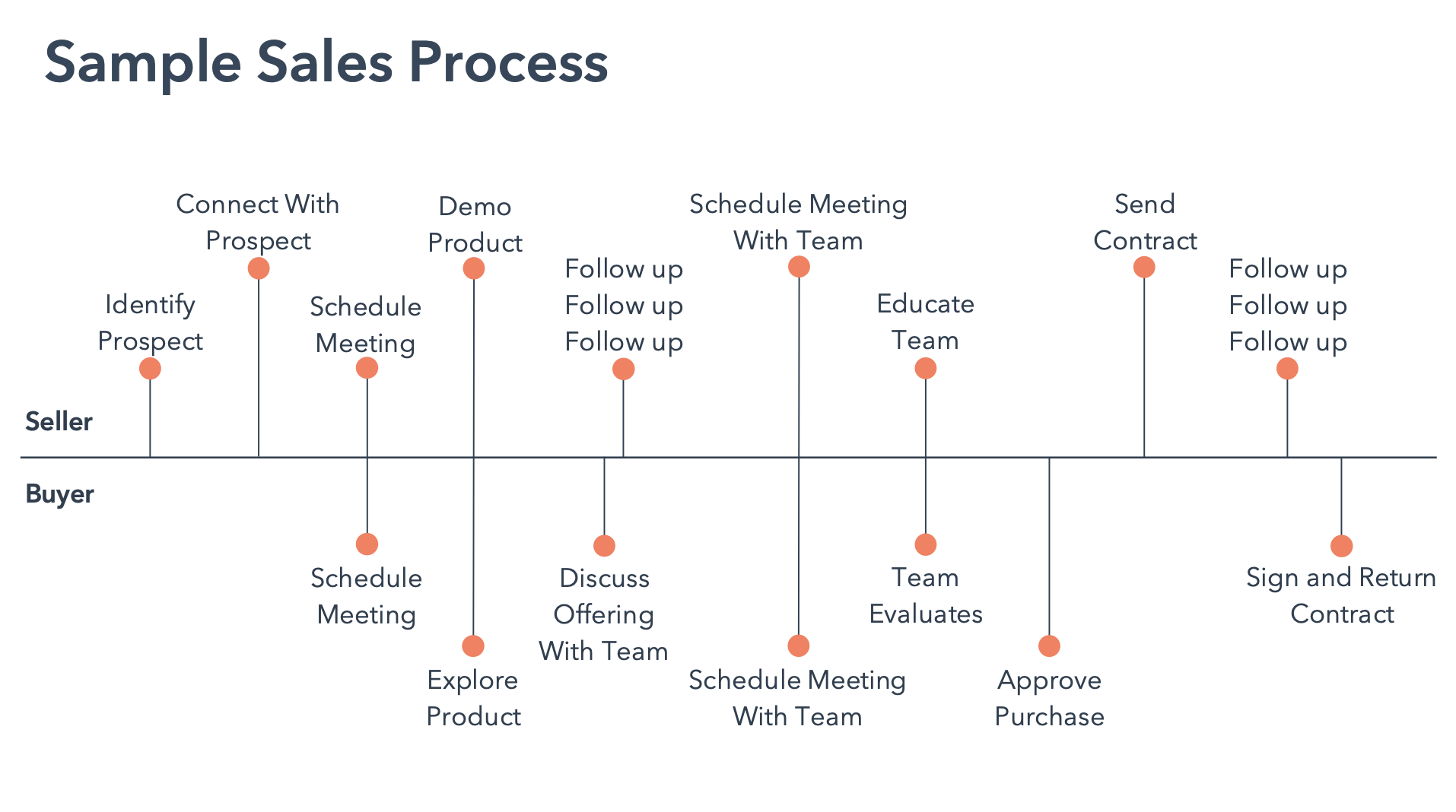
Pro tip: Your sales (deal) pipeline should ONLY show the milestones that prove a sale is progressing toward being won. I can't emphasise this enough! If this is not followed, your sales pipeline will be full of 'deals' that are actually just 'leads' which makes for a hot mess pretty quickly!
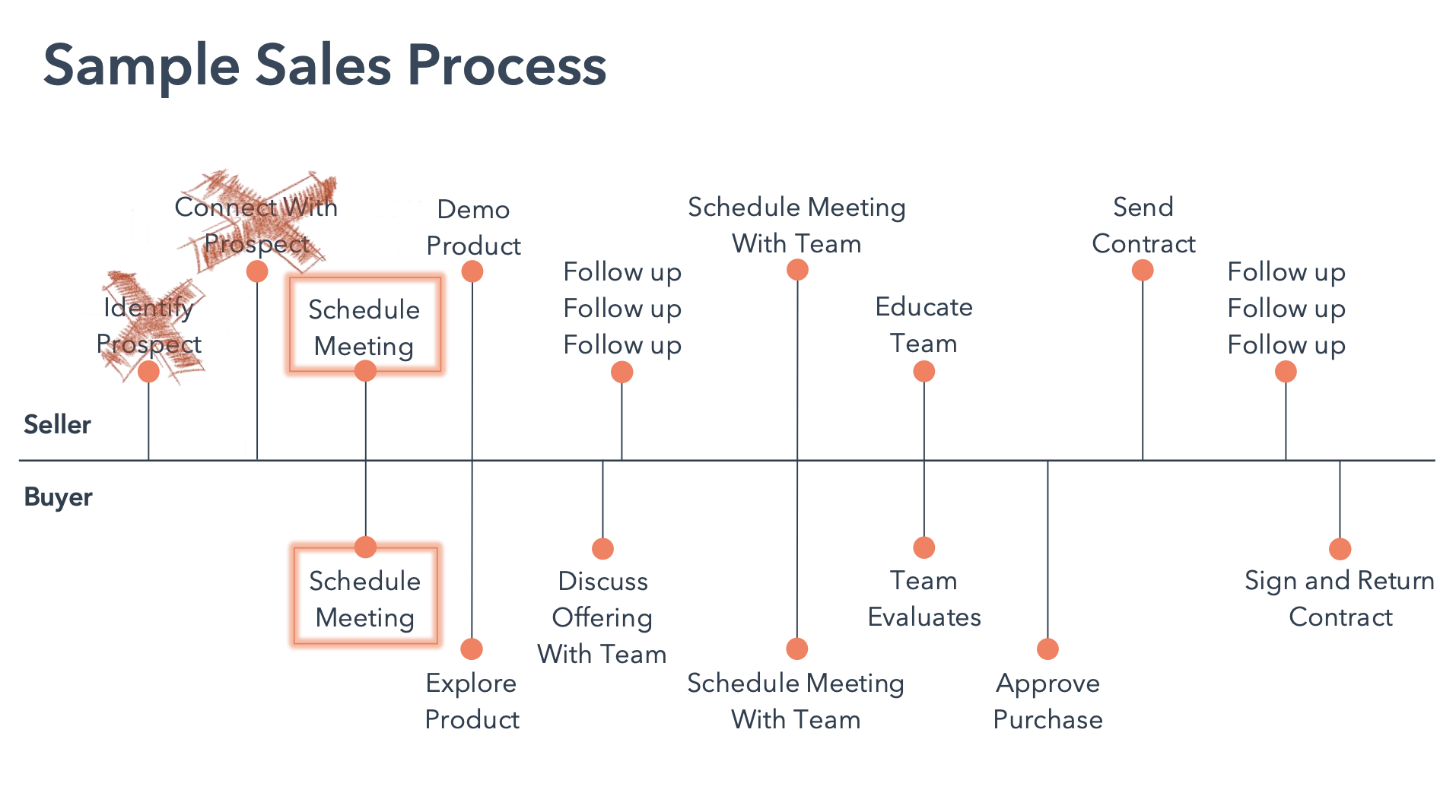
For every prospect/lead that's 'pre-deal' (typically before a meeting has been booked), they can be managed by using 'lifecycle stage' and 'lead status'
Here are seven default deal stages that come with HubSpot (with probability):
Appointment scheduled (20%)
Qualified to buy (40%)
Presentation scheduled (60%)
Decision maker bought-in (80%)
Contract sent (90%)
Closed won (100% Won)
Closed lost (0% Lost)
The world of sales is evolving, and hybrid selling is at the forefront of this evolution. With the right strategies, technology, and mindset, sales professionals can build meaningful relationships, exceed buyer expectations, and achieve exceptional sales success.
A vital part of that is defining your sales process and making sure it is super clear across your business, especially your marketing and sales team. Your sales process should also be
Embrace the power of hybrid selling to unlock your sales potential and create a winning sales process in today's dynamic business environment.
Learn more about B2B marketing and HubSpot.
Nathan is the CEO and Founder of Content Chemistry, a digital marketing agency and a HubSpot Platinum Solutions Partner. He has over 15 years' marketing experience in Australia and Europe, working both on the client-side and as an agency. He's passionate about content/inbound marketing, SEO and sales funnels. And yes he's been told that he looks like Roger Federer.